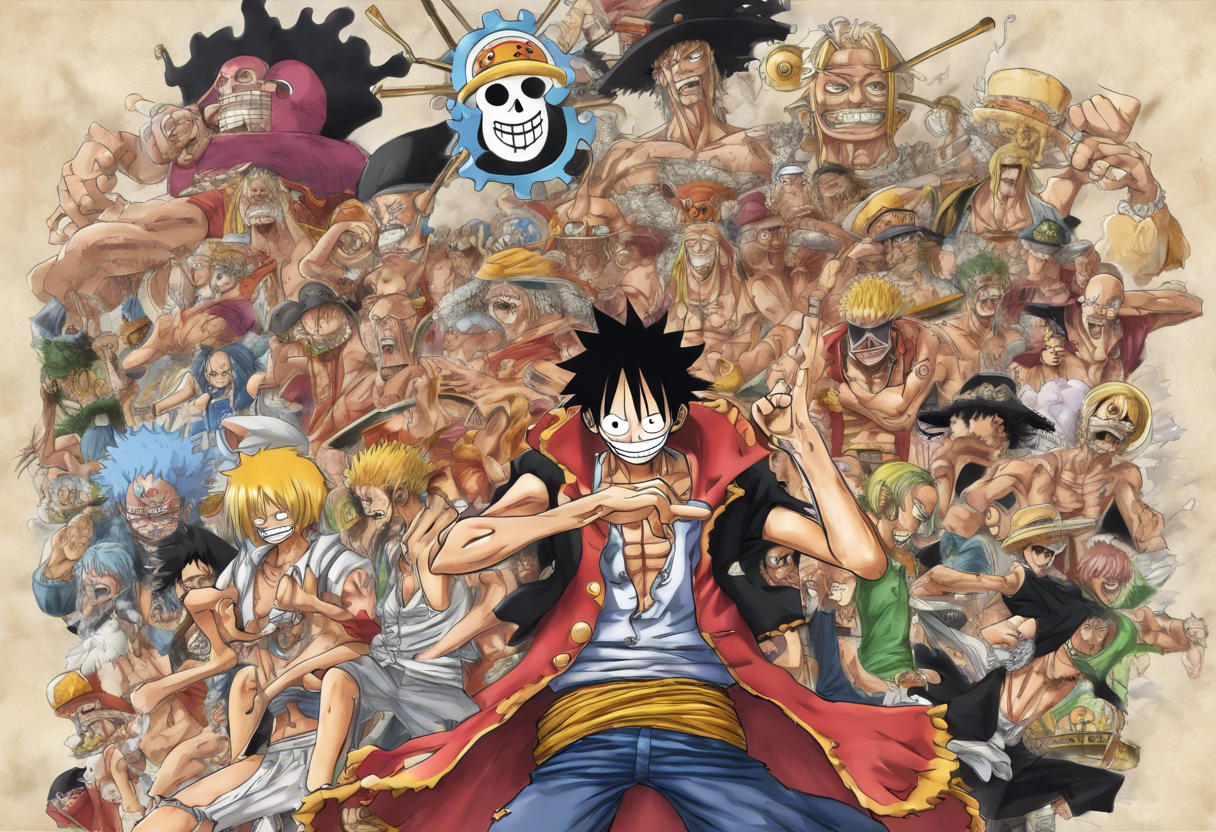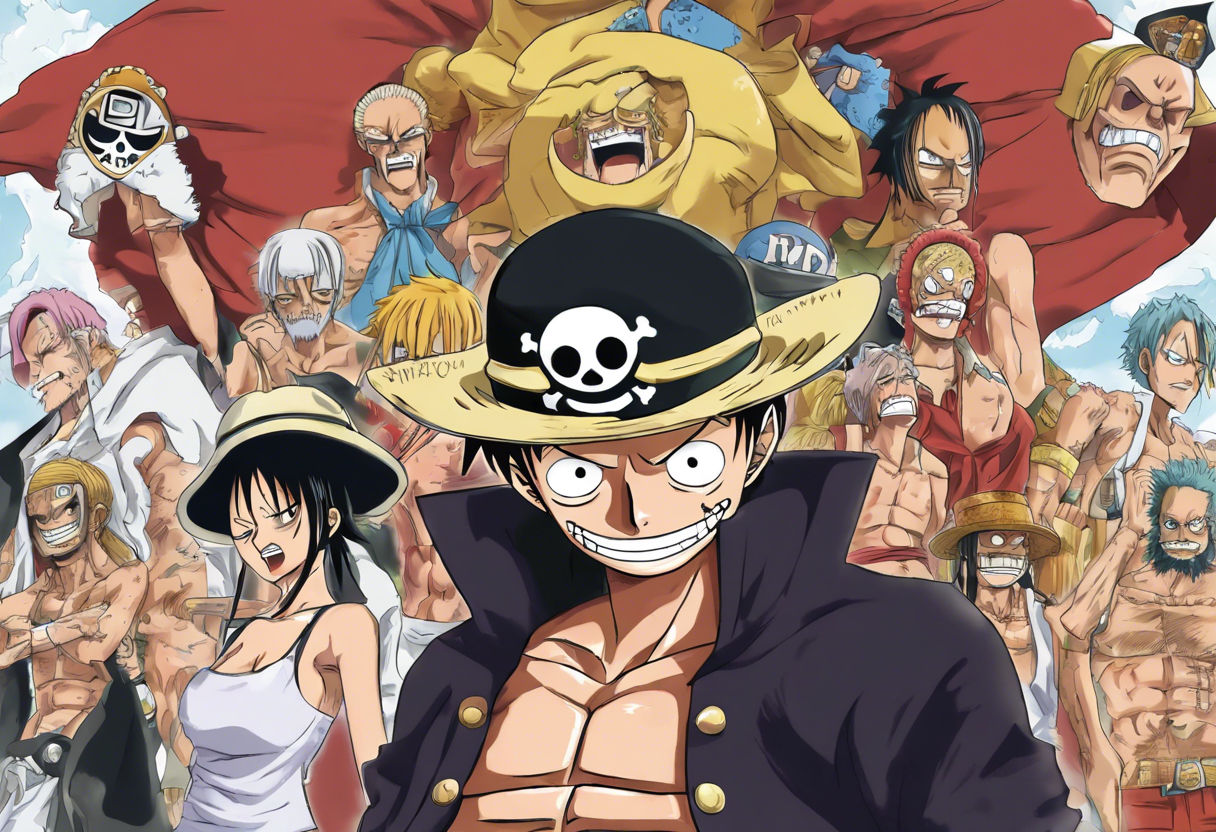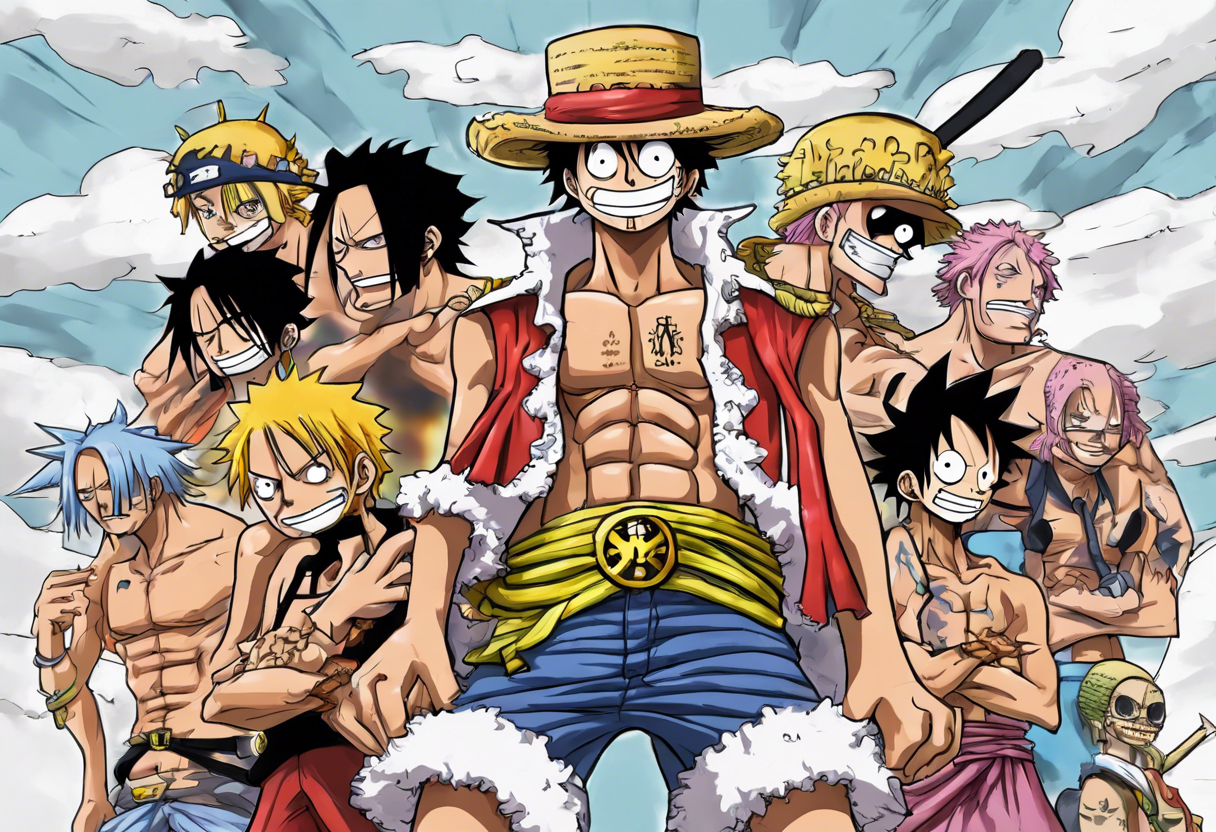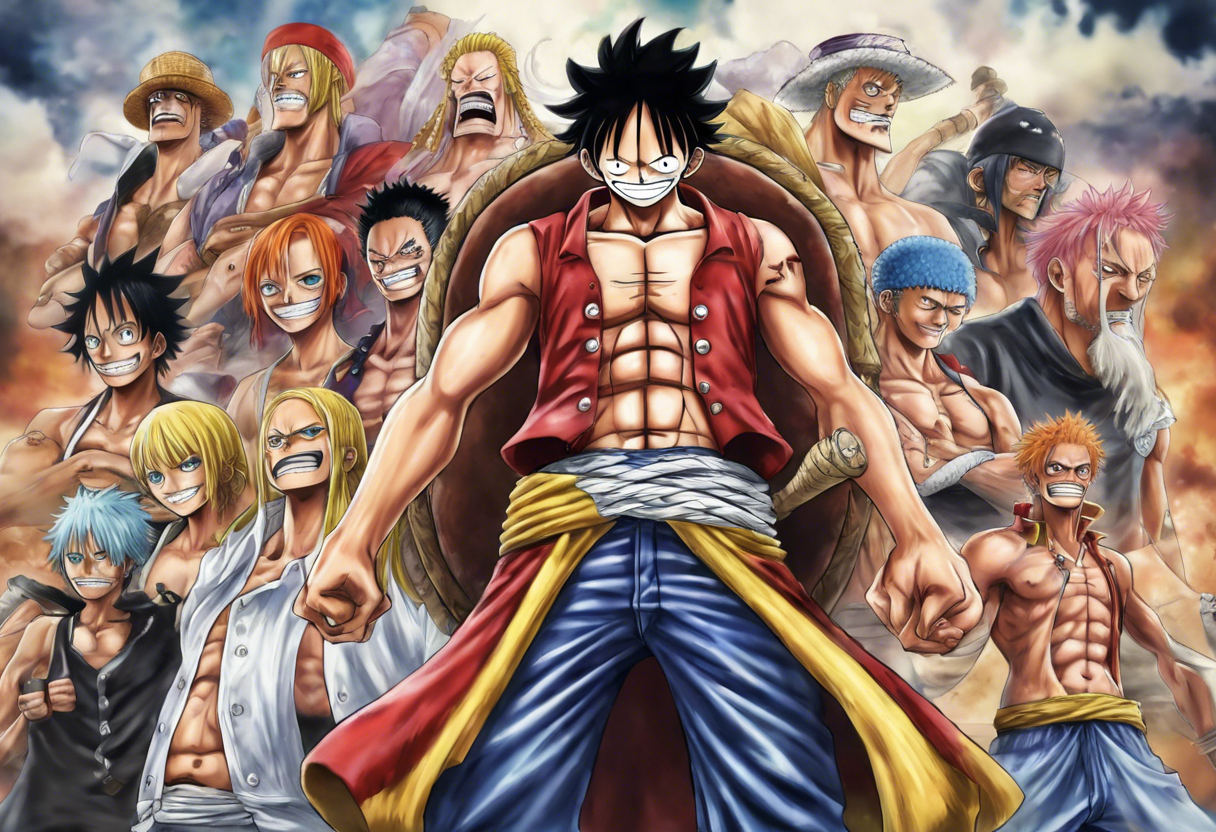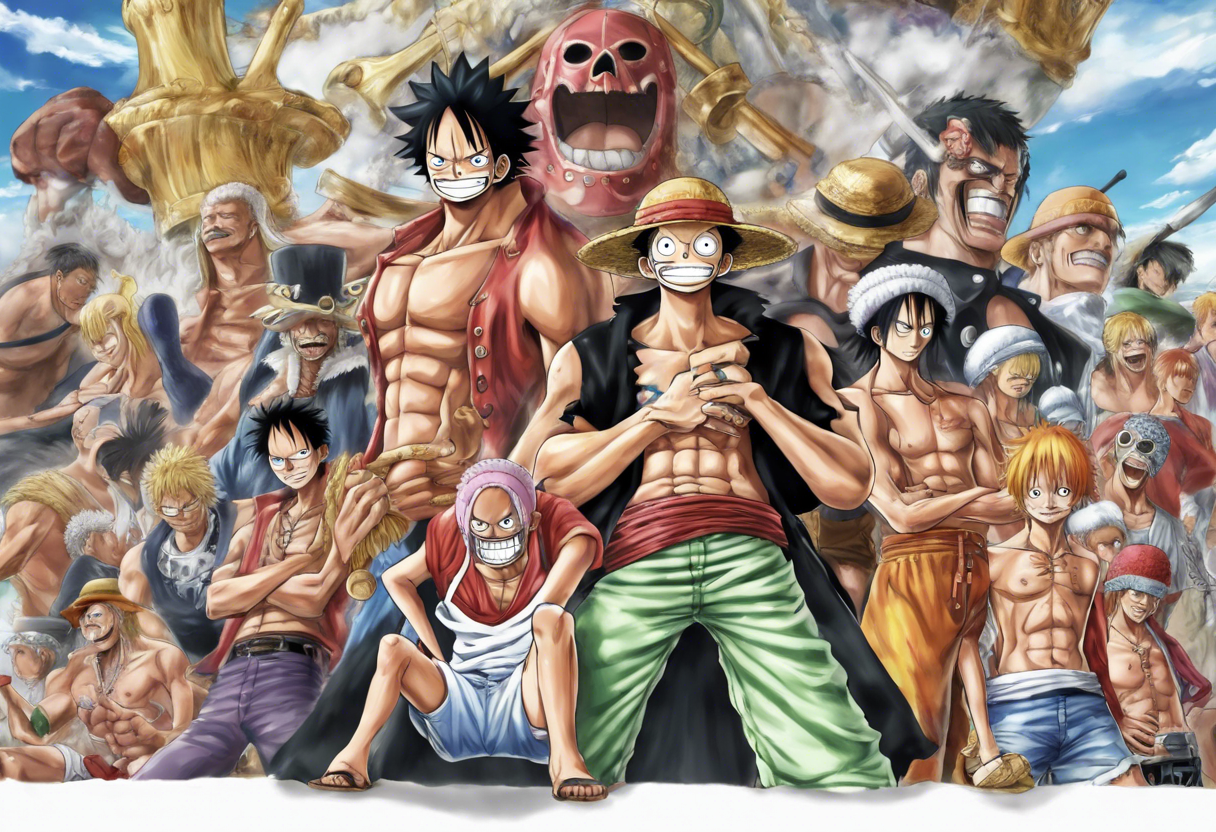Contents
Post-Alabasta Arc in One Piece: A Detailed Analysis
Introduction
The Post-Alabasta Arc in the anime series One Piece is a filler arc that follows immediately after the highly acclaimed Alabasta Arc. This arc, produced by Toei Animation, consists of five standalone episodes that delve into the personal histories and goals of the Straw Hat Pirates. While it does not contribute significantly to the overall plot of One Piece, it provides some insight into the characters’ backgrounds and aspirations.
The Post-Alabasta Arc was created to fill the gap between the Alabasta and Skypiea arcs, allowing the anime to catch up with the manga’s storyline. The key creative figures behind this arc include the director, Konosuke Uda, and the writers who adapted the filler content. The arc was initially released in 2003, as part of the ongoing One Piece anime series.
What sets the Post-Alabasta Arc apart is its unique approach to character development. Instead of a cohesive narrative, each episode focuses on a different member of the Straw Hat Pirates, offering a deeper look into their individual stories and motivations.
Plot Summary
The Post-Alabasta Arc comprises five episodes, each centered around a different member of the Straw Hat Pirates:
- Episode 131: "The First Patient The Untold Story of the Rumble Ball!" – This episode focuses on Chopper and his struggles with creating medicines, particularly his anxiety about treating Dr. Kureha [1][5].
- Episode 132: "Uprising of the Navigator For the Unyielding Dream!" – This episode explores Nami’s unwavering dream and her role as the navigator of the Straw Hat Pirates.
- Episode 133: "A Recipe Handed Down Sanji, the Iron Man of Curry!" – Here, Sanji’s culinary prowess and his passion for cooking are highlighted.
- Episode 134: "I Will Make it Bloom Usopp, the Man, and the Eight-Foot Shell!" – This episode delves into Usopp’s growth and his relationship with his crewmates.
- Episode 135: "The Fabled Pirate Hunter Zoro, the Wandering Swordsman!" – The final episode focuses on Zoro’s remarkable display of bravery and his sense of justice.
These episodes are standalone tales, each providing a unique perspective on the characters’ histories and dreams. However, they lack a overarching plot and do not significantly advance the main storyline of One Piece.
Themes and Symbolism
The Post-Alabasta Arc explores several central themes that are integral to the One Piece series:
- Character Development: The arc is primarily focused on deepening the audience’s understanding of the Straw Hat Pirates. Each episode delves into the personal struggles, aspirations, and motivations of the characters, making them more relatable and complex [1][5].
- Friendship and Camaraderie: The episodes highlight the strong bonds between the crew members, showcasing how their individual experiences and dreams are intertwined with their relationships within the crew.
- Personal Growth: The arc emphasizes the characters’ personal growth and development, particularly Chopper’s overcoming of his anxiety and Usopp’s maturation.
While these themes are well-intentioned, the arc has been criticized for being narratively shallow and not revealing anything that couldn’t be inferred from the context of the main storyline [1][5].
Cultural Impact
The Post-Alabasta Arc, although a filler, has had a notable impact on the One Piece fanbase. Here are a few aspects of its cultural significance:
- Fan Reception: The arc received mixed reviews from fans. While some appreciated the deeper dive into the characters’ backgrounds, others found it repetitive and lacking in significant plot progression [1][5].
- Influence on Fan Culture: Despite its filler status, the arc has inspired fan art, fan fiction, and discussions within the One Piece community. Fans have used these episodes as a basis to explore the characters’ personalities and relationships further.
- Adaptations and References: The themes and character insights from this arc have been referenced in other One Piece media, such as video games and merchandise, helping to maintain a cohesive character profile across different platforms.
Critical Reception
The critical reception of the Post-Alabasta Arc has been varied:
- Mixed Reviews: Critics and fans have noted that while the arc provides some character depth, it feels repetitive and lacks the substance of the main storyline. The absence of key characters like Nico Robin and Monkey D. Luffy has also been criticized [1][5].
- Narrative Shallowness: The arc has been criticized for not delving deeply enough into the characters’ stories, making it feel more like a filler than a meaningful addition to the narrative.
- Emotional Resonance: However, some episodes, particularly Chopper’s story, have been praised for their emotional resonance and the way they tackle the characters’ personal struggles [1][5].
Legacy
Despite its limitations, the Post-Alabasta Arc has a lasting impact on the One Piece series:
- Character Development Legacy: The arc’s focus on character development has set a precedent for future filler arcs and side stories in One Piece. It shows that even filler content can provide valuable insights into the characters.
- Fan Engagement: The arc continues to engage fans who are eager to learn more about their favorite characters. It serves as a comfort arc, allowing fans to connect more deeply with the Straw Hat Pirates.
- Inspirational Value: For creators and writers, the Post-Alabasta Arc can serve as an example of how to balance character development with the overall narrative, even in filler content.
In conclusion, the Post-Alabasta Arc in One Piece is a unique and somewhat divisive part of the series. While it does not advance the main plot, it offers valuable character insights and emotional depth, making it a worthwhile watch for dedicated fans.
References
- https://www.cbr.com/one-piece-every-filler-arc/
- https://www.youtube.com/watch?v=HTTnFW0XnXw
- https://gamefaqs.gamespot.com/boards/2000121-anime-and-manga-other-titles/60302544?page=1
- https://swordslore.substack.com/p/using-one-piece-as-a-model-for-running
- https://poggers.com/blogs/anime/one-piece-post-arabasta-arc-filler-summary-recap-review

